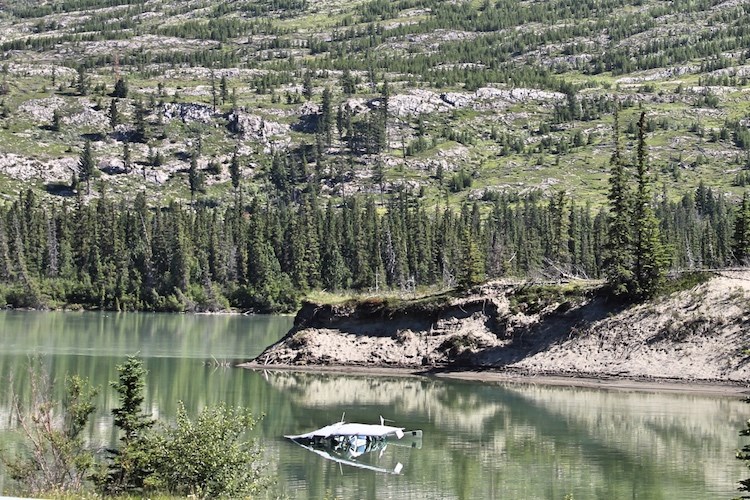
The tragic plane crash that rocked the community this summer was caused by an airplane stall.
The Transportation Safety Board (TSB) has just released its findings on the investigation of the crash that killed one Jasper man and left another fighting for his life.
On July 21, pilot Carlos Wynter and his friend David Conde prepared Wynter’s Cessna 150J aircraft for a flight to Hinton/Entrance Airport, the report said.
At 1:23 p.m. the aircraft took off and climbed for 25 seconds, reaching an altitude of about 150 feet above ground level.
But at about a kilometre from the airport, the aircraft stalled and entered a spin to the left.
It hit the water in a pool of the Athabasca River.
The plane’s emergency locator transmitter was activated immediately.
A pilot at the airport who had seen the crash called 911 and another eyewitness drove to the scene within minutes of the impact and helped both the pilot and passenger to shore.
Passersby from Highway 16 stopped at the scene to help give first aid and Jasper Emergency Medical Services were there soon after.
Wynter, the pilot, was severely injured in the accident and transported to Edmonton by air ambulance.
Passenger Conde was fatally injured and died at the scene.
Airplanes experience stalls when the angle at which they enter the wind current is greater than the critical angle of attack, and the airplane is no longer able to produce lift.
When this happens, there is not enough air traveling under the airplane’s wings to keep it up. As a result, the airplane drops, reducing its altitude, until the angle of attack is adjusted.
According to the TSB report, all the major components of the aircraft were accounted for at the accident site.
The aircraft’s GPS system was recovered and sent to the TSB Engineering Laboratory for analysis.
The report said just before the loss of control, the GPS recorded a reduction in ground speed from 83 mph to 64 mph and a course change approximately 30 degrees to the left of the runway track.
During the reduction in airspeed, the altitude remained constant at about 150 feet above ground level for almost five seconds before the aircraft was no longer a controlled flight and entered the aerodynamic stall and left-hand spin.
The temperature was about 24C and the winds when the plane took off were southerly at five to 10 knots.
The lead investigator on the TSB case was Jonathan Lee, a pilot with 19 years of aircraft investigation experience.
In the report, Lee said based on examination of the wreckage and photo and video information collected, it was determined that the engine and flight controls had been operating normally prior to impact.
The wing flaps were found in the retracted position and the aircraft was within the certified weight and balance limits.



